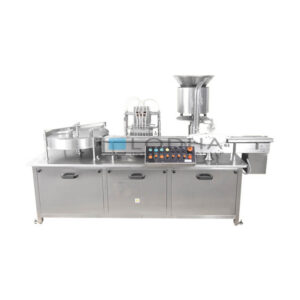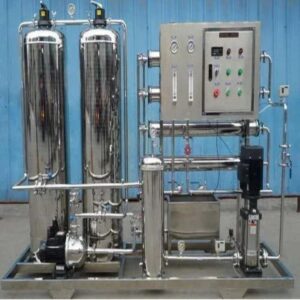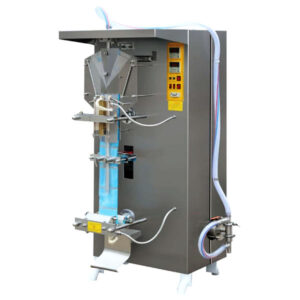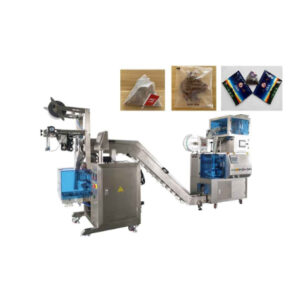Description
| Feature | Description |
|---|---|
| Machine Type | Filling and Capping Machine |
| Capacity | Varies depending on the model, typically between X and Y |
| Filling Method | Gravity, Piston, Pump, etc. |
| Filling Accuracy | Typically within ±0.5% of target weight/volume |
| Capping Method | Screw, Press-on, Snap-on, etc. |
| Capping Speed | Varies depending on cap type and machine model |
| Bottle/Jar Size Range | Diameter: A to B mm; Height: C to D mm |
| Power Supply | Voltage: X V; Frequency: Y Hz; Phase: Z |
| Power Consumption | Typically between P1 kW and P2 kW |
| Material | Stainless Steel, Aluminum Alloy, etc. |
| Control System | PLC (Programmable Logic Controller) |
| Operator Interface | Touchscreen, HMI (Human-Machine Interface) |
| Safety Features | Emergency Stop, Safety Guards, Interlocks, etc. |
| Dimensions | Length L mm x Width W mm x Height H mm |
| Weight | Typically between W1 kg and W2 kg |
| Optional Features | Bottle Cleaning, Labeling, Date Coding, etc. |
A bottle filling and capping machine is a vital piece of equipment in various industries, including pharmaceuticals, food and beverage, cosmetics, and household products. This automated system is designed to efficiently fill bottles with liquids or powders and securely seal them with caps or lids.
The machine operates through a series of precise mechanisms, typically starting with the placement of empty bottles onto a conveyor belt or platform. The bottles are then filled with the desired substance using pumps, nozzles, or other dispensing mechanisms, ensuring accurate volume and consistency.
Once filled, the bottles move to the capping station, where caps or lids are applied and sealed tightly to prevent leakage or contamination. This process may involve screwing on caps, applying pressure seals, or utilizing other sealing methods depending on the specific requirements of the product.
Bottlefilling and capping machines offer numerous benefits to manufacturers, including increased production efficiency, improved product consistency, reduced labor costs, and enhanced hygiene standards. Additionally, these machines can be customized to accommodate various bottle sizes, shapes, and types of packaging, making them versatile solutions for diverse production needs.
Understanding the bottle filling and capping machine
In today’s fast-paced manufacturing landscape, efficiency is key to staying competitive. Industries ranging from pharmaceuticals to food and beverage are constantly seeking ways to streamline their production processes while maintaining high quality. One solution that has gained widespread adoption is the automated filling and capping machine. Let’s delve into how this innovation is transforming the way products are packaged and delivered to consumers.
The Rise of Automated Filling Systems
Traditionally, filling bottles and containers was a labor-intensive task, requiring skilled workers to ensure accuracy and consistency. However, with advancements in technology, automated filling systems have become increasingly popular. These systems utilize precision machinery and software to automate the process, resulting in higher production rates and reduced human error.
How Automated Filling Works
At the heart of automated filling systems are sophisticated machines equipped with pumps, nozzles, and sensors. The process begins with the placement of empty bottles onto a conveyor belt or platform, where they are transported to the filling station. Here, the bottles are filled with the desired substance according to pre-set parameters.
Precision and Accuracy
One of the key advantages of automated filling systems is their ability to deliver precise and consistent fill volumes. Advanced sensors and controls ensure that each bottle receives the correct amount of product, eliminating waste and minimizing variations in dosage or quantity. This level of accuracy is particularly critical in industries such as pharmaceuticals, where even slight deviations can have significant consequences.
Versatility in Packaging
Another benefit of automated filling systems is their versatility in accommodating various types of packaging. Whether it’s bottles, vials, jars, or tubes, these machines can be customized to handle different shapes, sizes, and materials. This flexibility allows manufacturers to adapt quickly to changing market demands and offer a diverse range of products to consumers.
Sealing the Deal
Once the bottles are filled, they proceed to the capping station, where caps or lids are applied and sealed securely. This step is crucial for maintaining product integrity and preventing contamination or leakage. Automated capping machines utilize a variety of techniques, including screwing on caps, applying pressure seals, or even induction sealing for tamper-evident protection.
Efficiency and Cost Savings
By automating the filling and capping process, manufacturers can significantly increase their production efficiency while reducing labor costs. These machines operate at high speeds, allowing for greater output in less time compared to manual methods. Additionally, the precise control offered by automated systems minimizes product wastage, resulting in cost savings over the long term.
Maintaining Quality Standards
In industries where product quality is paramount, automated filling and capping machines offer a level of consistency and reliability that is difficult to achieve with manual labor. By adhering to strict quality control measures and ensuring compliance with regulatory requirements, manufacturers can uphold the highest standards of safety and efficacy for their products.
Types of bottle filling and capping machine
- Overflow Filling Machines: These machines are ideal for filling containers with foamy or viscous liquids. Overflow fillers work by filling the container to a level and then allowing excess liquid to overflow, ensuring a consistent fill level across all bottles. They are commonly used in industries such as cosmetics, pharmaceuticals, and food and beverage.
- Piston Filling Machines: Piston fillers are versatile machines suitable for filling a wide range of products, including liquids, creams, pastes, and gels. They operate by using a piston and cylinder mechanism to dispense precise volumes of product into containers. Piston fillers are popular in industries such as personal care, automotive, and household chemicals.
- Gravity Filling Machines: Gravity fillers are ideal for filling free-flowing liquids into containers. These machines use the force of gravity to fill bottles from a tank or reservoir, resulting in a gentle and accurate filling process. Gravity fillers are commonly used in industries such as wine and spirits, edible oils, and pharmaceuticals.
- Vacuum Filling Machines: Vacuum fillers are suitable for filling containers with volatile or sensitive products, such as essential oils, perfumes, and pharmaceuticals. These machines operate by creating a vacuum in the bottle, which draws the liquid from a reservoir into the container. Vacuum fillers minimize exposure to air and maintain product integrity during the filling process.
- Rotary Filling Machines: Rotary fillers are high-speed machines capable of filling multiple bottles simultaneously. They feature a rotating turret with multiple filling heads, allowing for efficient filling of bottles as they move along a conveyor belt. Rotary fillers are commonly used in industries with high production volumes, such as beverage bottling and pharmaceutical manufacturing.
- Capping Machines: Capping machines come in various types, including screw cappers, snap cappers, and induction sealers. Screw cappers tighten caps onto bottles using rotating heads, snap cappers apply pressure-sensitive caps, and induction sealers use heat to create a tamper-evident seal. Capping machines ensure secure and tamper-proof closure of bottles, preventing leakage and contamination.
Applications of bottle filling and capping machine
1. Pharmaceutical Industry
In the pharmaceutical industry, bottle filling and capping machines are crucial for accurately dispensing medications, vitamins, and other pharmaceutical products into bottles or vials. These machines ensure precise dosage control, maintain product integrity, and comply with strict regulatory requirements.
2. Food and Beverage Industry
Bottlefilling and capping machines play a vital role in the food and beverage industry for packaging products such as sauces, condiments, oils, beverages, and more. They ensure hygienic and consistent filling of bottles while maintaining freshness and extending shelf life.
3. Cosmetics and Personal Care Products
In the cosmetics and personal care industry, bottle-filling and capping machines are used to package various products, including lotions, creams, shampoos, and perfumes. These machines ensure accurate filling and sealing, preserving the quality and integrity of the products.
4. Household and Cleaning Products
Bottle filling and capping machines are employed in the packaging of household and cleaning products such as detergents, disinfectants, and surface cleaners. These machines enable efficient filling and sealing of bottles, ensuring product safety and preventing leakage.
5. Chemical and Industrial Products
In the chemical and industrial sector, bottle filling and capping machines are utilized for packaging a wide range of products, including lubricants, solvents, adhesives, and specialty chemicals. These machines enable precise dispensing and secure sealing, minimizing wastage and ensuring product safety.
6. Health and Wellness Supplements
Bottlefilling and capping machines are instrumental in the packaging of health and wellness supplements such as vitamins, minerals, and dietary supplements. These machines ensure accurate dosage control, consistent filling, and tamper-evident sealing, maintaining product efficacy and safety.
7. Beverages and Liquid Refreshments
In the beverage industry, bottle filling and capping machines are essential for packaging a variety of liquid refreshments, including water, juices, soft drinks, and alcoholic beverages. These machines ensure efficient filling, sealing, and labeling of bottles, meeting consumer demand for quality and convenience.
8. Agricultural and Horticultural Products
Bottlefilling and capping machines are used in the packaging of agricultural and horticultural products such as fertilizers, pesticides, and plant nutrients. These machines enable accurate dispensing and secure sealing, ensuring product integrity and safety for end-users.
9. Pet Care Products
In the pet care industry, bottle filling and capping machines are employed for packaging products such as pet shampoos, conditioners, and grooming solutions. These machines enable efficient filling, sealing, and labeling of bottles, meeting the needs of pet owners for high-quality and convenient products.
10. Automotive and Industrial Lubricants
In the automotive and industrial sectors, bottle-filling and capping machines are utilized for packaging lubricants, oils, and fluids used in vehicles and machinery. These machines ensure precise dispensing and secure sealing, preventing contamination and ensuring optimal performance of equipment.
Functionalities of bottle filling and capping machine
1. Bottle Handling
The first functionality of bottle filling and capping machines involves handling empty bottles. This includes processes such as bottle orientation, positioning, and alignment to ensure proper placement on the conveyor system. Bottle handling systems may use sensors, guides, and mechanical arms to manage bottles effectively.
2. Filling
The primary function of these machines is to accurately fill bottles with liquid, powder, or granular products. Depending on the type of product and packaging requirements, bottle-filling machines utilize different mechanisms such as gravity, piston, vacuum, or overflow filling. These systems ensure precise volume control and consistency in filling across all bottles.
3. Product Metering
Product metering is an essential functionality of bottle-filling machines, particularly in industries where precise dosage control is critical, such as pharmaceuticals. Metering devices ensure that the correct amount of product is dispensed into each bottle, minimizing wastage and ensuring uniformity in dosages.
4. Capping
After filling, bottles proceed to the capping station where caps or lids are applied and sealed securely. Capping machines come in various types, including screw cappers, snap cappers, and induction sealers. These machines ensure that caps are applied with the right amount of torque, preventing leakage and maintaining product integrity.
5. Cap Handling
Cap handling systems manage the supply and placement of caps before they are applied to bottles. This includes sorting, orienting, and feeding caps into the capping machine at the appropriate time. Cap-handling mechanisms may use vibratory feeders, sorting bowls, or pneumatic systems for efficient cap delivery.
6. Cap Tightening
Once caps are applied to bottles, cap-tightening mechanisms ensure that they are securely fastened to prevent tampering or leakage. Adjustable torque control systems allow for precise tightening of caps according to the specific requirements of the product and packaging.
7. Inspection
Quality control is a critical aspect of bottle filling and capping machines. Inspection systems are integrated into the production line to detect defects, such as underfilled bottles, missing caps, or improper seals. Vision systems, sensors, and automated reject mechanisms identify and remove faulty bottles from the production line to maintain product quality.
8. Cleaning and Sanitization
To comply with hygiene standards, bottle filling and capping machines feature cleaning and sanitization functionalities. Automated cleaning systems flush and sterilize filling nozzles, conveyor belts, and other components between production runs to prevent cross-contamination and ensure product safety.
9. Changeover and Adjustability
Modern bottle filling and capping machines are designed for flexibility and quick changeover between different products and packaging formats. Adjustable settings allow operators to customize fill volumes, cap sizes, and other parameters to meet specific production requirements with minimal downtime.
10. Integration and Control
Integration with other production equipment and centralized control systems optimize the overall efficiency of bottle filling and capping processes. PLC (Programmable Logic Controller) systems coordinate the operation of various components, monitor production metrics, and facilitate real-time adjustments for optimal performance.
Frequently Asked Questions
- What types of products can be filled and capped using these machines?
Bottle-filling and capping machines are versatile and can handle a wide range of products, including liquids, creams, gels, powders, and granules. Common examples include beverages, pharmaceuticals, cosmetics, and household chemicals.
- How do bottle filling and capping machines ensure accurate fill volumes?
These machines utilize precision measurement systems such as piston fillers, gravity fillers, or volumetric pumps to ensure accurate fill volumes. Sensors and controls monitor the filling process to maintain consistency and minimize wastage.
- Are bottle filling and capping machines customizable to accommodate different bottle sizes and shapes?
Yes, most modern machines are highly customizable and can be adjusted to accommodate various bottle sizes, shapes, and types of packaging. Adjustable guides, changeable parts, and programmable settings allow for flexibility in production.
- What safety features are integrated into these machines to ensure operator and product safety?
Bottle-filling and capping machines incorporate safety features such as emergency stop buttons, protective guarding, and interlocking systems to prevent accidents and ensure operator safety. They also adhere to strict quality standards to maintain product safety.
- How do these machines handle different types of caps and closures?
Capping machines come with interchangeable heads or tooling to accommodate various types of caps and closures, including screw caps, snap caps, press-on caps, and induction seals. These machines are designed to apply caps securely and accurately.
- Can bottle-filling and capping machines be integrated into existing production lines?
Yes, most machines are designed for seamless integration into existing production lines. They can be configured to synchronize with other equipment such as conveyors, labeling machines, and packaging systems for efficient operation.
- How do bottle-filling and capping machines contribute to sustainability in manufacturing?
These machines help minimize product wastage by ensuring accurate filling and sealing, reducing the need for rework or disposal of defective products. They also optimize energy and resource usage, contributing to overall sustainability in manufacturing processes.
- What maintenance and servicing requirements are necessary for bottle filling and capping machines?
Regular maintenance and servicing are essential to ensure optimal performance and longevity of these machines. This includes cleaning, lubrication, inspection of components, and timely replacement of worn parts.
- Can bottle-filling and capping machines be operated by non-specialized personnel?
While some level of training is necessary, modern machines are designed with user-friendly interfaces and intuitive controls, making them accessible to operators with basic technical skills. Comprehensive user manuals and training programs are often provided by manufacturers.
- What is the typical lifespan of a bottle filling and capping machine?
The lifespan of these machines depends on factors such as usage, maintenance, and technological advancements. With proper care and maintenance, a well-built machine can last for many years, providing a reliable and efficient solution for packaging needs.





